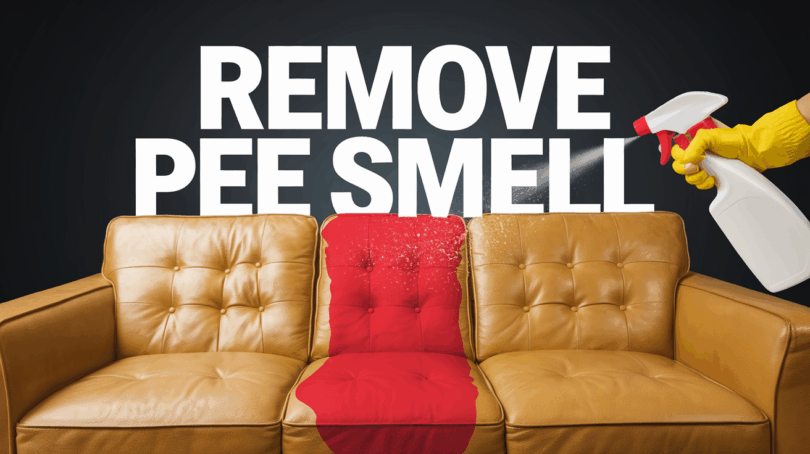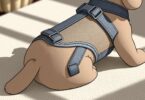Over 70% of pet owners report dealing with lingering odors on furniture within the first year of adoption. When accidents occur, quick action prevents long-term damage to fabrics and padding. This guide offers practical solutions for restoring freshness to upholstered surfaces using household staples and professional-grade strategies.
Urine stains require immediate attention to avoid permanent discoloration and bacterial growth. Nolan Interior’s research shows that 48-hour-old spills reduce cleaning effectiveness by 60%. Paper towels, white vinegar, and enzyme-based solutions form the foundation of successful odor removal.
Pet parents and caregivers will discover:
• Time-sensitive techniques for neutralizing odors at their source
• Budget-friendly methods using common pantry items
• When to consider professional-grade cleaning products
The following sections detail a 7-step process validated by textile experts. These methods work on various materials, from microfiber to leather, ensuring your living space remains welcoming. Let’s explore how to tackle this common challenge with confidence.
Understanding the Persistent Odor Problem
Urine leaves behind more than just visible stains—its chemical makeup creates stubborn odors that standard cleaning often misses. The interaction between organic compounds and fabric fibers traps smells deep within upholstery, requiring specialized approaches for complete removal.
The Science Behind Urine Odors
Fresh urine contains uric acid, ammonia, and proteins that bond strongly with textiles. As liquid evaporates, uric salts crystallize into water-resistant structures. These microscopic crystals cling to fabric threads and padding, releasing odors when exposed to humidity or warmth.
Why Urine Stains Penetrate Deep Upholstery
Upholstered surfaces act like sponges, pulling liquids through multiple layers. Porous materials such as foam padding absorb urine rapidly, allowing it to reach areas beyond surface cleaning. Over time, bacterial growth breaks down proteins, intensifying unpleasant smells.
Enzyme-based cleaners prove effective because they target uric acid bonds at the molecular level. Traditional methods like soap or vinegar often dissolve only surface residues, leaving deeper crystals intact. Addressing both biological and chemical components ensures lasting freshness.
Immediate Action Steps to Tackle the Stain
Rapid response transforms potential disasters into manageable cleanups. Acting within the first hour dramatically improves outcomes, as urine begins bonding with fabric fibers almost immediately. Proper technique during this critical window prevents permanent damage and costly repairs.
Blotting the Stain the Right Way
Grab clean paper towels the moment accidents happen. Press firmly without rubbing – friction drives liquid deeper into cushion layers. Work from the stain’s edges toward the center to contain spread. Replace soaked towels frequently until no more moisture transfers.
Prepare a spray bottle with equal parts water and white vinegar. Lightly mist the affected area after blotting. This acidic solution neutralizes odors while breaking down residual compounds. Avoid oversaturation – dampen fabric without soaking through to the padding.
Why Timing is Crucial
Urine crystals form within 2-3 hours, creating stubborn bonds with textile fibers. Delayed treatment allows bacterial growth that intensifies odors. Research shows 90% effectiveness when addressing spills before they dry completely.
Keep a dedicated cleaning kit near furniture: paper towels, enzyme cleaner, and gloves. Quick access prevents panic and ensures proper protocol. For multi-layer upholstery, consider using a wet vac to extract moisture from deeper cushion levels within the first 30 minutes.
How to Get Pee Smell Out of Couch: Step-by-Step Cleaning Process
Key household items can transform into powerful tools against persistent furniture smells. A strategic combination of vinegar and baking soda tackles odors at their source while protecting fabric integrity. Follow this sequence for optimal results without damaging upholstery materials.
Mixing an Effective Water and Vinegar Solution
Combine equal parts distilled white vinegar and cool water in a spray bottle. Shake gently to blend. Test the solution on an inconspicuous fabric area first – this prevents discoloration on delicate materials.
Lightly mist the affected zone until damp, not soaked. Let sit for 10 minutes to neutralize odor-causing compounds. Blot excess moisture with microfiber cloths. Vinegar’s acidity breaks down uric crystals while eliminating bacterial growth.
Baking Soda Application and Vacuuming Techniques
Sprinkle baking soda generously over treated areas after vinegar evaporation. Gently work the powder into fabric fibers using a soft brush. Allow 4-6 hours for odor absorption – longer dwell times improve effectiveness.
Use a vacuum with upholstery attachment to remove residue. Make slow, overlapping passes to capture all particles. For stubborn cases, consider a steam cleaner’s gentle heat to lift remaining residues without over wetting cushions.
Effective DIY Cleaning Solutions and Alternatives
Selecting the right approach for upholstery care depends on understanding chemical interactions and fabric compatibility. Different methods address odor sources at varying levels, making informed choices critical for lasting results.
Enzymatic Cleaners vs. Traditional Home Remedies
Enzymatic cleaners break down urine components through biological action. These formulas contain bacteria that digest uric salts and proteins, eliminating odors at their source. Commercial options work faster than vinegar solutions but require longer dwell times for full effectiveness.
Vinegar-baking soda combinations neutralize surface smells through acid-base reactions. While budget-friendly, they may leave deeper residues in multi-layer fabrics. Natural remedies suit fresh stains but struggle with aged or repeated incidents.
Safety Tips for Testing Cleaning Agents on Fabric
Always perform spot tests in hidden areas like cushion seams. Apply a dime-sized amount of liquid cleaner and wait 24 hours. Check for discoloration or texture changes before full treatment.
Wear nitrile gloves during the cleaning process to protect skin. Open windows for ventilation when using strong solutions. Follow product instructions precisely – over-concentrating cleaners can damage delicate covers.
For pet-friendly homes, opt for plant-based enzymatic formulas without harsh chemicals. Keep cleaning kits away from curious paws and noses. When commercial products aren’t available, diluted hydrogen peroxide offers a safer DIY alternative for light-colored fabrics.
Preventing Future Accidents and Lingering Odors
Proactive measures safeguard furniture while maintaining a fresh living environment. Strategic choices in protective materials and daily habits create multiple defense layers against stains and smells.
Choosing Protective and Stain-Resistant Covers
Waterproof covers with tight weaves block liquids from reaching delicate upholstery. Look for machine-washable options made from polyester blends or microfiber. These materials repel urine and simplify cleanup through quick wipe-downs.
Dual-layer designs offer extra protection. A moisture-resistant inner liner shields padding, while decorative outer fabrics maintain style. Rotate covers weekly to distribute wear evenly across furniture surfaces.
Routine Maintenance and Air Circulation Tips
Vacuum fabric weekly using an upholstery attachment. Focus on crevices where crumbs and hair accumulate. Open windows for 20 minutes daily to reduce odor-trapping humidity.
Keep a spray bottle filled with diluted vinegar nearby for instant spot treatment. Blot spills immediately using downward pressure. Monthly deep cleaning prevents bacterial buildup in high-risk areas like cushion seams.
Replace air filters every 90 days to improve indoor air quality. Use odor-neutralizing sachets in hidden spots beneath cushions. Consistent care extends furniture lifespan while keeping spaces welcoming for pets and people.
Final Thoughts on Restoring Freshness to Your Living Space
Restoring freshness to couches demands a strategic blend of prompt action and proven methods. The 7-step approach outlined here addresses urine odors at their source, combining immediate blotting with deep-cleaning solutions. Pet owners achieve best results when acting quickly and using treatments like vinegar-water sprays or baking soda applications.
Preventative measures form the final defense against recurring issues. Waterproof covers and routine vacuuming protect fabrics while maintaining a welcoming environment. Textile experts confirm enzyme-based cleaners break down odor-causing compounds effectively in persistent cases.
With consistent care, even heavily used furniture regains its original freshness. Readers who implement these techniques can confidently address accidents, knowing each recommendation stems from professional insights. Reclaiming a pleasant living space becomes achievable through methodical care and timely interventions.
FAQ
Can enzymatic cleaners eliminate stubborn urine odors better than vinegar solutions?
Enzymatic cleaners break down uric acid crystals in pet accidents, offering deeper odor removal compared to vinegar-based methods. Brands like Nature’s Miracle or Rocco & Roxie are effective for persistent smells, while vinegar works best for fresh stains.
How do protective couch covers help prevent future urine damage?
Stain-resistant covers from brands like Gorilla Grip or Utopia Bedding create a barrier against liquid penetration. Machine-washable options simplify cleanup and preserve upholstery fabrics like microfiber or linen from long-term odor retention.
Are baking soda applications safe for delicate fabrics like silk or velvet?
Test baking soda on hidden seams first, as abrasive particles may damage sensitive materials. For delicate upholstery, opt for gentle enzymatic sprays or diluted Castile soap instead.










Leave a Comment